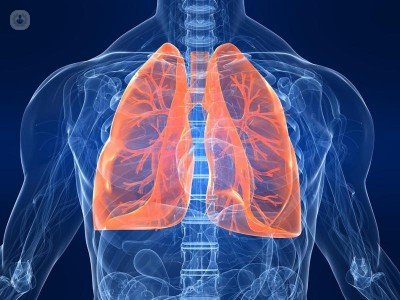Videothoracoscopy
Mr Kelvin Lau - Cardiothoracic surgery
Created on: 06-07-2016
Updated on: 10-09-2023
Edited by: Kate Forristal
What is video-assisted thoracoscopic surgery (VATS)?
Video-assisted thoracoscopic surgery (VATS) stands as a cutting-edge, minimally invasive medical technique that offers a window into your pleural cavity. Through VATS, medical professionals can proficiently pinpoint, diagnose, and effectively treat a diverse range of chest and lung ailments.
A cardiothoracic surgeon will carry out this procedure.

What does VATS entail?
The VATS procedure is a well-orchestrated fusion of advanced fiber-optic scopes and highly skilled healthcare specialists. This surgical marvel unfolds by initiating up to three small incisions within your chest region. Subsequently, minute cameras and precision surgical instruments are gently introduced through these openings. This miniature camera, in particular, serves as the surgeon's eyes inside your chest, providing a clear view of their actions throughout the procedure. Remarkably, VATS minimises trauma associated with the surgery, given its absence of substantial ribcage incisions. Consequently, this holistic process results in virtually painless experiences for patients, culminating in smoother post-operative recoveries when contrasted with conventional thoracoscopy. After the surgery, in certain cases, you might have one chest drain placed at the site of the incisions, or, more rarely, two drains, facilitating the optimal management of your recovery journey.
Why is it performed?
Video-assisted thoracoscopic surgery can be performed in several situations, ranging from diagnosing benign conditions to tumours. It can be used to prepare for surgery, for example when it is necessary to perform a lung resection, or in case there are some masses which need to be removed inside the chest cavity.
VATS is extremely helpful for diagnosing pleural disorders (pleural effusion), conditions affecting the pulmonary interstitium (fibroids, granulomatous disease) and pulmonary nodules (also known as coin lesions), which may cause a tumour. This technique can also be used for carrying out a lymph node biopsy or for a mediastinal mass biopsy (the area in between the lungs).
In terms of surgical procedures, VATS can be used in a number of lung surgeries including:
- lobectomy
- segmental resection
- atypical resection
- lung decortication
- removal of bullae resulting from emphysema
- surgery of the thymus (thymus removal or tumours originating from the thymus)
Finally, VATS can be used in treating severe infections.
How can I prepare for it?
Depending on the type of surgery required, you may need a local or general anaesthetic, so before the operation the anaesthetist will meet with you to determine your suitability for anaesthetic.
You should also inform the surgical team if you have problems with your back or any condition that would make it difficult for you to lie on your side during the operation.
